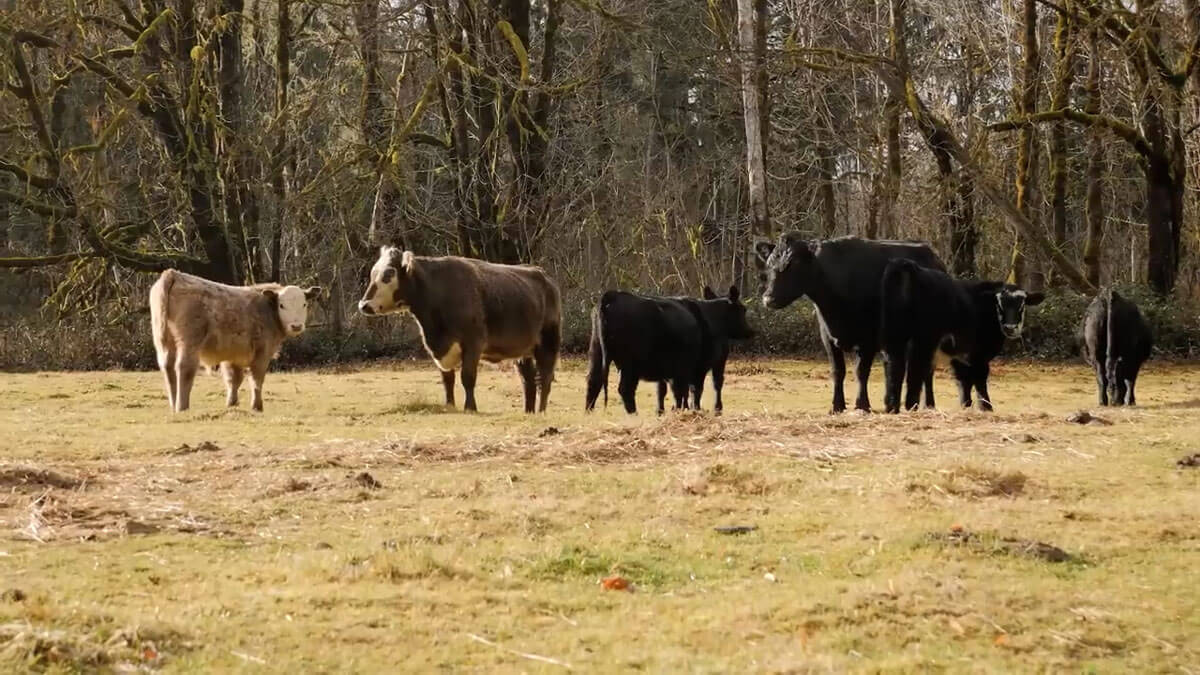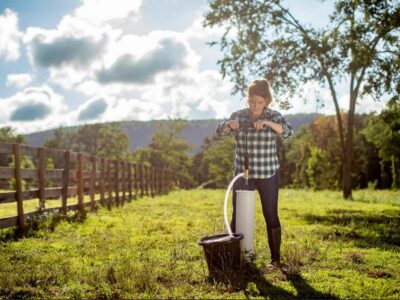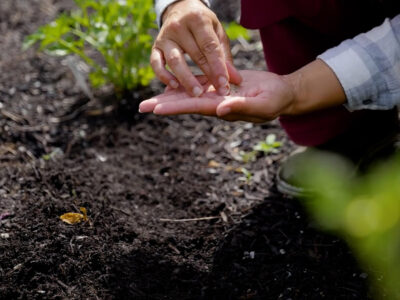We purchased the Norris Farmstead two years ago now and have been working to rehabilitate the pastures that came with the old homestead ever since. We knew it had thistle issues, but we didn’t realize the extent of the problems until discussing it further with Karson from Redmond Agriculture.
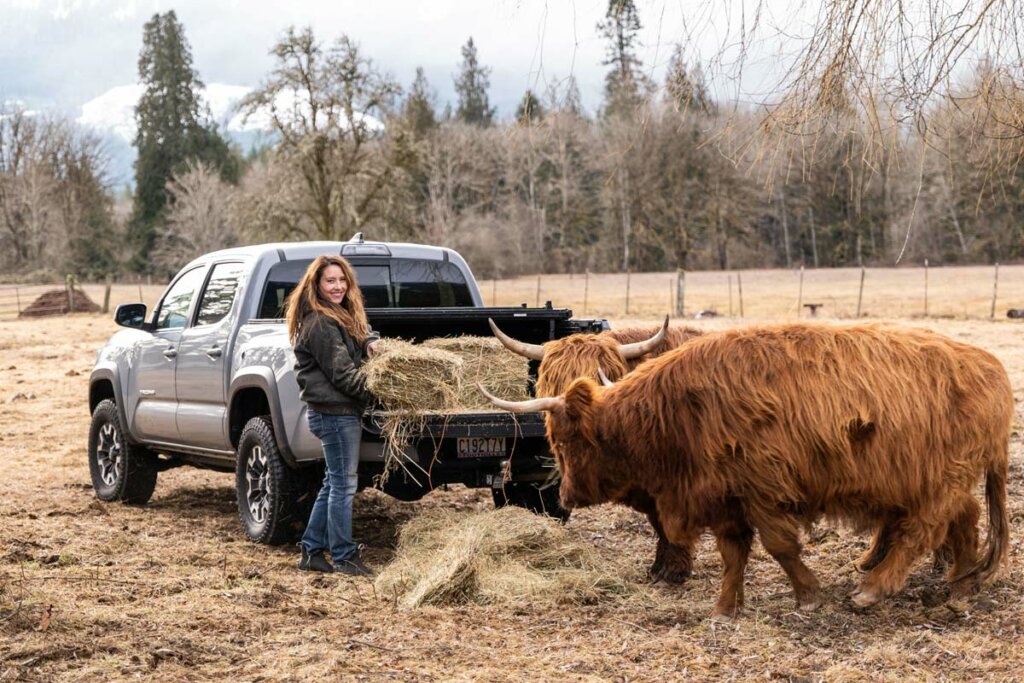
Table of Contents[Hide][Show]
Why Healthy Pastures Matter
One of the most expensive parts that come with raising cattle (especially beef cattle) is their feed. If you live in a climate where you can grow grass and pasture almost all year long, that will greatly reduce your costs.
In the Pacific Northwest, we’re lucky to be growing grass from May-October. However, in years with extreme drought, we’ve had to supplement as early as August.
When you’re dealing with pasture that has less-than-ideal soil health, there are many challenges that can come into play.
I called Karson Rippstein from Redmond Agriculture to help us figure out a plan that would improve our soil fertility and double our pasture (cutting our feed costs significantly).
He’s teaching me how to read the pasture and learn why the thistles are growing in the first place (Hint: they’re a result of a problem, not the actual problem).
If you missed the journey of how we came to purchase this property, you can learn more about our 40-acre Farmstay here.
I’ve also discussed methods for maximizing your homestead for production and profit through rotational grazing with Joel Salatin in podcast episode #308, as well as silvopasture and co-grazing to improve your land with Shelby DeVore in podcast episode #275.
Knowing what we’re looking at in our pastures is the key to decoding what went wrong in the first place. If we don’t know what went wrong, it’s difficult to fix the issue.
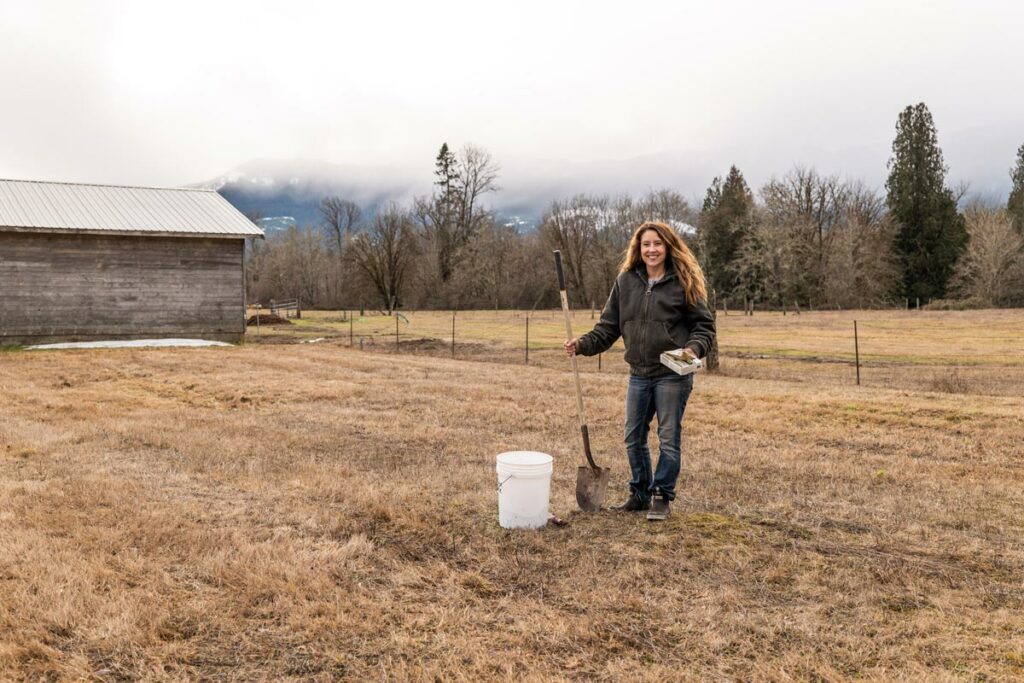
The Problems with Our Pasture
In our pasture, we knew we had a thistle issue and suspected a soil issue (watch as we do a soil test of the pasture here). However, upon further inspection, Karson pointed out that we have two types of grasses growing in the field. One of the grasses is an annual grass instead of a perennial grass.
- Overgrazed: Where a field is overgrazed, that’s where problems such as thistles and annual grasses love to come in. Rotational grazing alone will help partially fix this issue, but we’re looking to help speed the process up a bit.
- Annual Grasses & Thistles: One would think having annual grasses is preferred (especially over something like thistles), but they’re both revealing the same problem, overgrazing.
- Dry Soil: Karson also pointed out that where the annual grasses are, the soil is much dryer. Perennial grasses help keep and retain moisture in the soil, prolonging the growing season even in drought conditions.

How to Rehabilitate Our Pasture
Karson correctly identified that in the early spring, our pastures look beautiful, lush and green. Then, as the weather heats up and dries out, the grasses stop growing and die off.
- Cover Crop: Karson recommends planting a warm-season cover crop. We want to keep living things on top of the soil to help protect the soil and increase fertility.
- Bale-Grazing: Next, Karson recommended bale-grazing the cattle in the field that need some rehabilitation to bring in organic matter and natural fertility through their manure. What this means is placing bales of hay to bring the cattle to this area of the field (even using temporary fencing to keep them in).
- Dead-Heading: If you want to stop the spread of annual grasses, thistles or anything else you don’t want to re-seed, it’s important to dead-head the plants to keep their seed from dropping to the ground.
- Mineralyte: Thistles love soil that’s compacted, overgrazed and not doing well. Bringing in some mineral life can help dissuade new thistle seeds from taking root. Redmond has a product called Mineralyte that can help spark life back into the soil. You can also get a soil test kit that will let you know if your soil is deficient in any specific minerals. (Use code “PIONEERINGTODAY” to get 15% off your order from Redmond Agriculture.)
We’ll be sure to share our pasture rehabilitation updates as we implement these changes and see the results.

More Posts You May Enjoy
- Planning our “Farm Stay” Homestead
- Creating a Homestead Business That Makes Money
- Urban Homesteading – Tips for Small Space Self-Sufficiency
- Biggest Homestead Mistakes We Made & What to Avoid
- What to do When Homesteading Gets Tough
- How to Buy a Homestead – What to Look For
- How to Get Everything Done in a Day Without Wasting Time or Getting Distracted
- How to Prepare Your Homestead for Selling
- Tips for Homesteading Off-Grid & Life w/out a Fridge or Running Water
